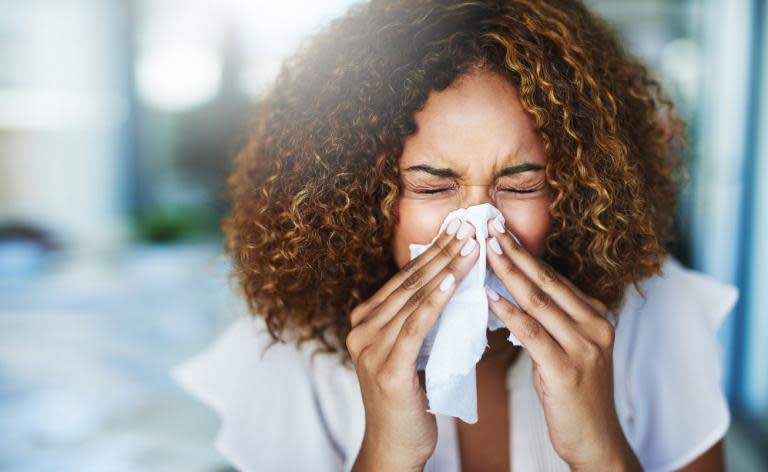Hay fever symptoms: How to combat them throughout spring
As the blossoms start to bloom and temperatures start to rise during spring, hay fever sufferers may struggle to spend time outdoors without their symptoms flaring up.
For the unlucky individuals afflicted with sneezing fits, runny noses and itchy eyes every year, it can be incredibly frustrating having to endure the debilitating symptoms.
However, there are precautions that you can take to keep your symptoms at bay, or at least reduce their severity.
Here are some top tips for combatting hay fever this year:
Track pollen count
Pollen count varies day by day depending on the weather.
When you check the weather forecast, the information provided will include the daily pollen count.
According to Allergy UK, the pollen count tends to be higher on days that are warmer and dryer, and lower on days that are cooler and wetter.
This is because rain typically washes pollen from the air.
If the day ahead is set to be particularly warm and dry, try to limit your time spent outdoors.
Keep clean
When you do venture outside, pollen can become attached to your hair and clothes.
In order to avoid your hay fever symptoms playing havoc after a day spent outdoors, make sure that you shower and wash your hair after arriving home.
You should also change your clothing as soon as possible.
When pollen counts are recorded as being high, itâs important to remember not to dry your clothes outdoors.
Avoid grassy areas
Anyone who suffers from hay fever knows that grassy areas can cause your symptoms to spike.
While it may be impossible to avoid grassy areas altogether, if you know that youâre particularly affected by grass it may be worth avoiding large grassy spaces or doing activities such as camping, as advised by Dr Mary Harding.
If youâre typically in charge of gardening duties in your household, perhaps it would be best to delegate this task to someone else.
Beware car air
As well as being aware of the pollen count outdoors, you need to also take indoor air into account.
If youâre travelling in a car, make sure that you keep your car windows closed during your journey.
Hayfever is some neeky illness lmao how are plants making you cry.
â Ù (@plsbeonjob)
Little bit of sun and suddenly hayfever slaps me on the face
â Mustafa (@shanshiyoo)
Of course, doing this on a hot day can be stifling. However, if you turn on the air conditioning in your car, you may be blasted with pollen from the outside.
Investing in a pollen filter for the air vents in your car could do you a whole lot of good.
Dr Harding recommends changing pollen filters every time you stop the car for activities such as filling up on petrol or going for a bite to eat.
Medicate
Keeping your stock of hay fever medicine topped up is obviously vital.
There are various different types of medicines that you can try, depending on what your doctor recommends is best for you.
Antihistamine nasal sprays, antihistamine tablets, steroid nasal sprays and eye drops are all available to buy from local pharmacies to stem hay fever symptoms.
Dr Sabrina Shah-Desai, an ophthalmic and oculoplastic surgeon, stated that people with hay fever should take antihistamines before their symptoms start playing up.
âIn hay fever, histamine causes eye symptoms such as inflammation, redness and itching by acting on H1 histamine receptors in the eyes," she said.
âEye drops block the H1 receptors, however this treatment only works if taken before contact with the allergen, and it can take a number of weeks for the effects of the treatment to be seen."



